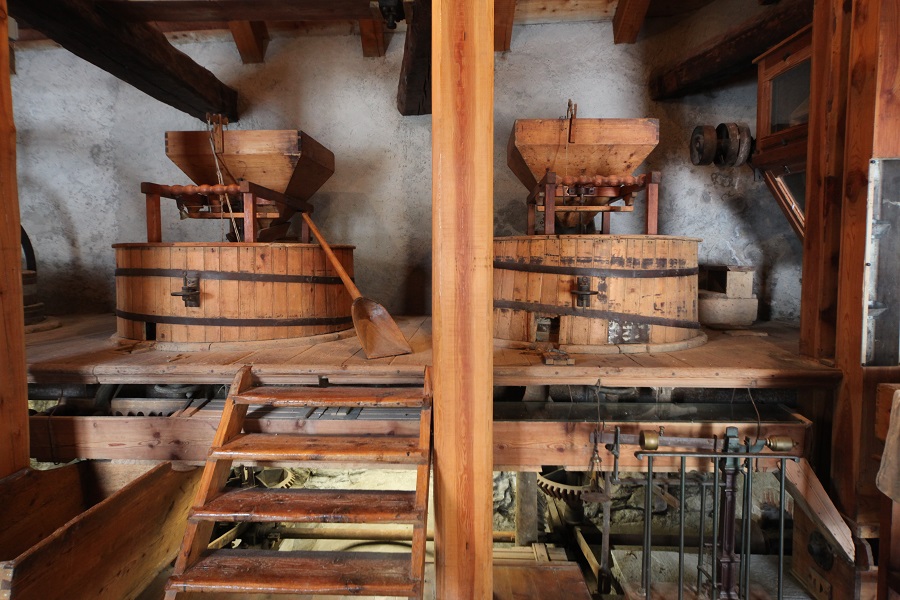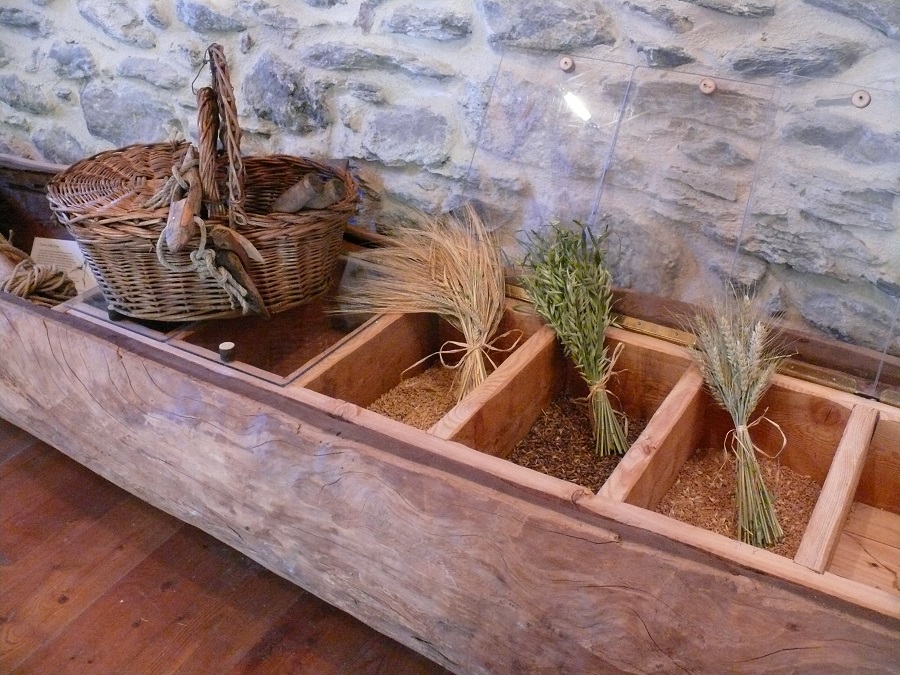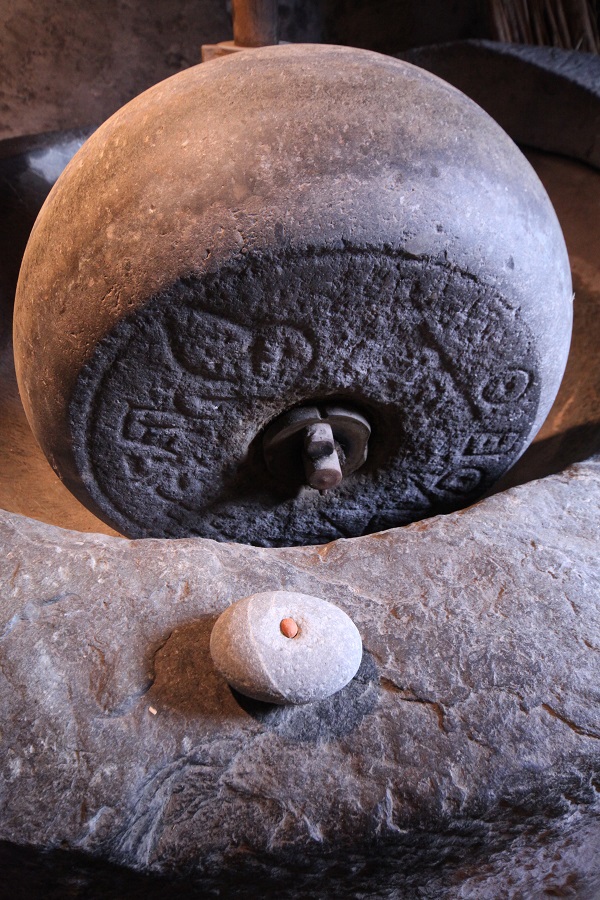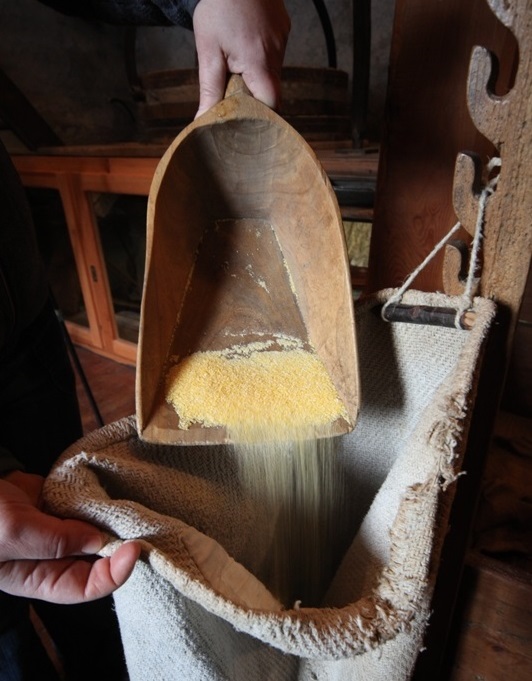Hydraulic mill of Martinet
Ultimo aggiornamento: July 31, 2025
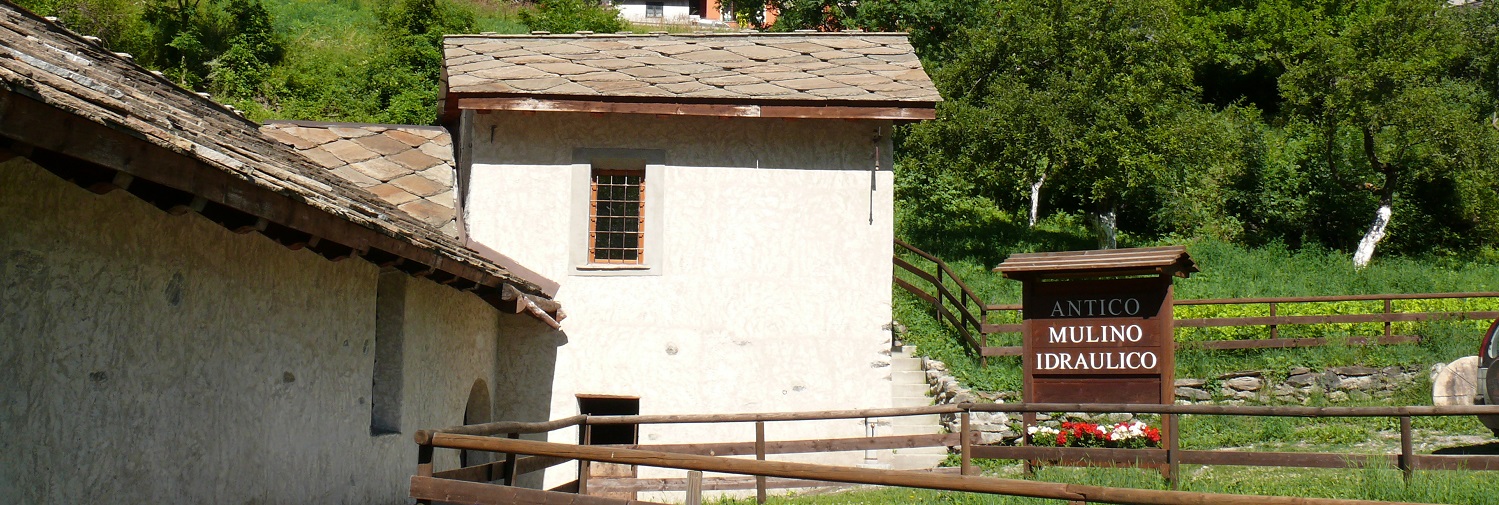
L'esterno del Mulino con lo stallotto e la stanza del mugnaio
The mill that appears before our eyes today is the result of many transformations that have taken place over time, also linked to natural events and the historical-political events of the valley.
The building, owned by the Municipality of Salbertrand, entrusted for free loan to the Ente Parco del Gran Bosco and subsequently to the Ente di gestione delle Aree Protette delle Alpi Cozie (manager of the Ecomuseum Colombano Romean), was restored at the end of the 20th century and now houses three distinct plants and various setups inside.
The grain mill
The actual mill, equipped with three pairs of millstones (of which one, in turn, is always stationary for maintenance) intended for processing grains, in particular rye (blä), but also wheat (frumën), barley (örjë), and oats (sivà).
Once ground, the flours, through an auger and a bucket elevator, were transferred to the bolter, bařütè, a device consisting of silken sieves with meshes of different sizes capable of selecting fine flour (fařina fina), regular flour (fařina du pan), semolina (fařinetta), and bran (brën).
To the right of the entrance, there is still the stable that housed the mules with which the farmers brought sacks of cereals to be ground to the mill. It was indeed customary for each person to wait their turn to witness the grinding of their cereals... That was the moment of the famous "mill talks," an opportunity to chat and gossip a bit about everyone...
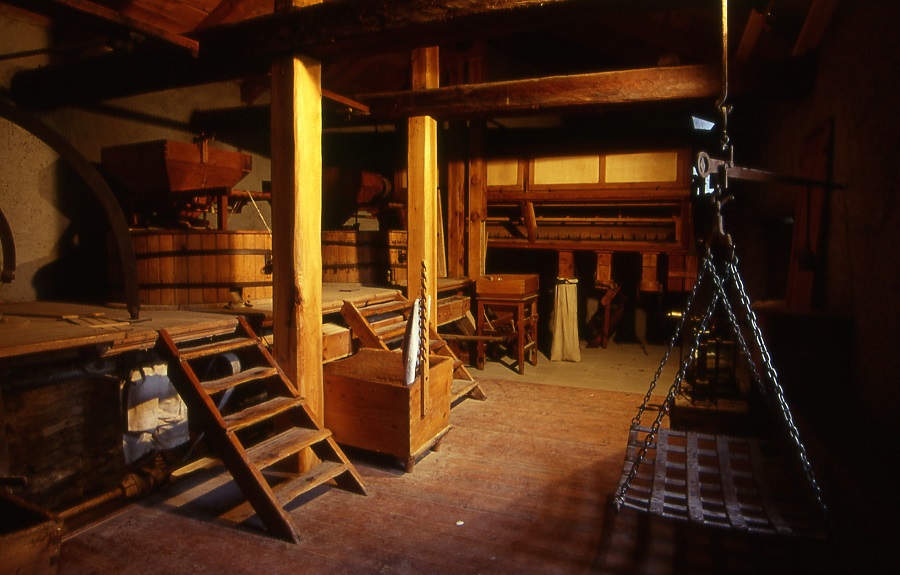
The local grinds - Simona Molino
The oil mill
The "pesta", the pitä, made up of a circular monolithic stone basin on which a vertical grindstone rotated, was used for the scutching of hemp, the quintessential textile plant in the valley, and for the production of walnut oil, hazelnuts, hemp and flax seeds, and wild plums (called marmotte).
The so-called "marmot oil" was produced from the fruits of the Prunus brigantiaca, an endemic species of our mountains. The plums were harvested at the end of summer and left to rot outdoors to detach the flesh from the pits, which were then cracked during the long winter evenings in the stables. The resulting seeds were crushed and heated to increase the yield, then pressed to extract a yellow-golden, fluid, clear oil used both as seasoning and for illumination.
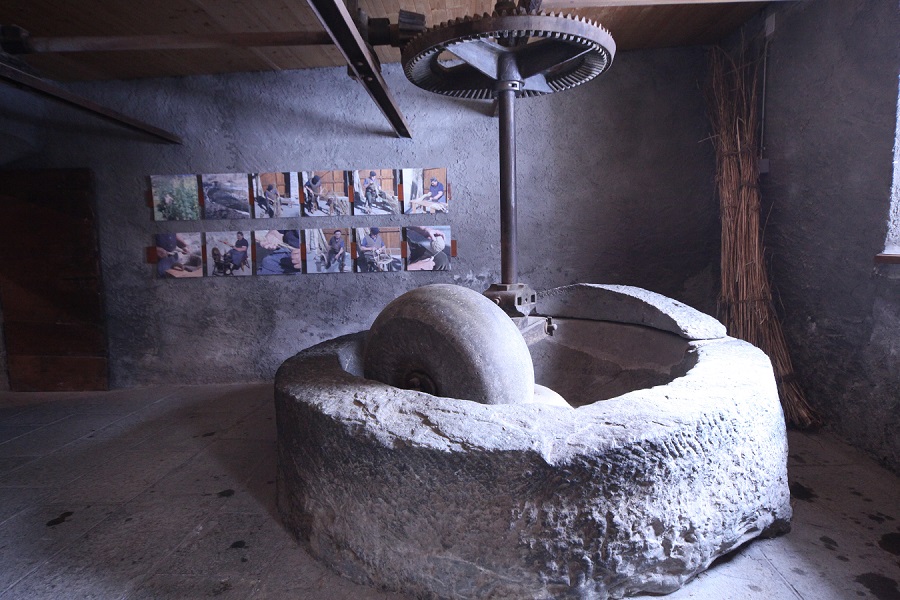
The comb for processing hemp - Luca Giunti
The modern mill
The modern control panels of the dynamo and the distribution panel of the electricity produced there tell the story of the last century of this ancient mill and the local Electric Company.
The flood of 1957 marked the end of the hydroelectric power plant's activity, due to the damage to the intake structure and channel and the lowering of the Dora riverbed, which no longer allowed the bealera to be fed. The millstones continued to work powered by energy from the Chiomonte plant until the 1970s, when the inevitable end of a self-sufficient economy based on self-consumption led to the disappearance of extensive cereal crops and the need to grind them.
In recent years, new spaces have been reclaimed inside the mill, and museum setups have been created to showcase the rich heritage of tools and objects used in the daily life of the past, made available by the community.
As mentioned, the hydraulic mill of Martinet is one of the most interesting and best-preserved in the entire Upper Susa Valley, but it is not the only one in Salbertrand... In the municipal territory, there are in fact 5 sites: besides the mill in the capital that exploited the waters of the Dora, we also have the San Bernardo Mill on the Gironda River, with cereal mills, hemp pounder, and forge, the milling hub of Oulme in the Fàuria area along the Dry River, the five cereal mills in sequence along a single bealera at Eclause, and the mill, and perhaps an oil mill, in Frenée.
For more information, refer to cahier no. 7 of the Ecomuseum Colombano Romean "Man, Water, and Mountain, proto-industry in the Upper Susa Valley" by the Association Cultura e Territorio ACT, and cahier no.16 "the Martinet mill and the electric company of Salbertrand"

Four turbines of the hydroelectric power plant - Luca Giunti
The recent history
In recent years, new spaces have been recovered within the mill, and museum displays have been created to showcase the rich heritage of tools and everyday objects used in the past, provided by the community.
As mentioned, the hydraulic mill of Martinet is one of the most interesting and well-preserved in the entire Upper Susa Valley, but it is not the only one in Salbertrand... In the municipal territory, there are actually 5 sites: in addition to the mill in the town center that exploited the waters of the Dora, we note the San Bernardo Mill on the Rio Gironda, which housed grain mills, hemp pounding machines, and a forge, the milling center of Oulme located in Fàuria, along the Rio Secco, the five grain mills in sequence along a single bealera at Eclause, and the mill, and perhaps a oil mill, at Frenée.
Further information on the cahier n. 7 of the Ecomuseum Colombano Romean "Man, Water, and Mountain, Proto-industry in the Upper Susa Valley" curated by the Association Culture and Territory ACT, and on the cahier n.16 "the Martinet Mill and the Electric Company of Salbertrand"

I am unable to translate the word "Macine" as it appears to be misspelled. If you provide more context or a correction, I'll be happy to assist with the translation. - Luca Giunti

Cereals - Simona Molino

Stone mill and tool for breaking Prunus brigantiaca nuts for oil production - Luca Giunti

Miller's third hand - Luca Giunti
